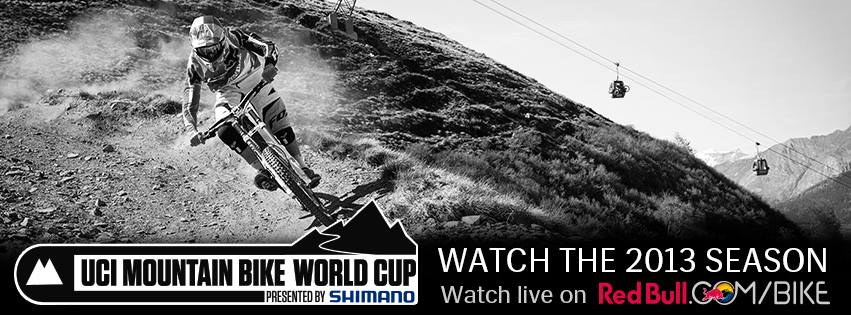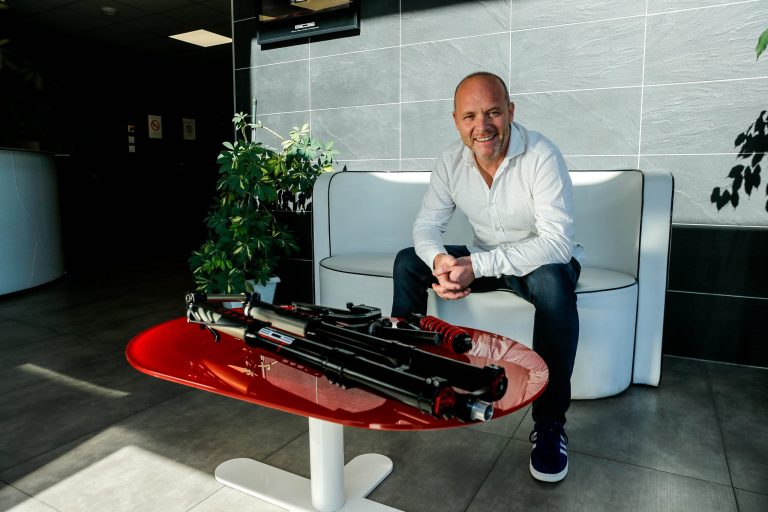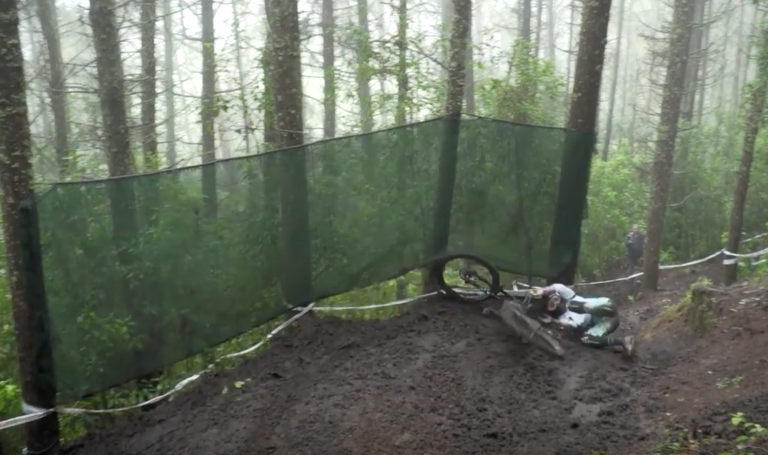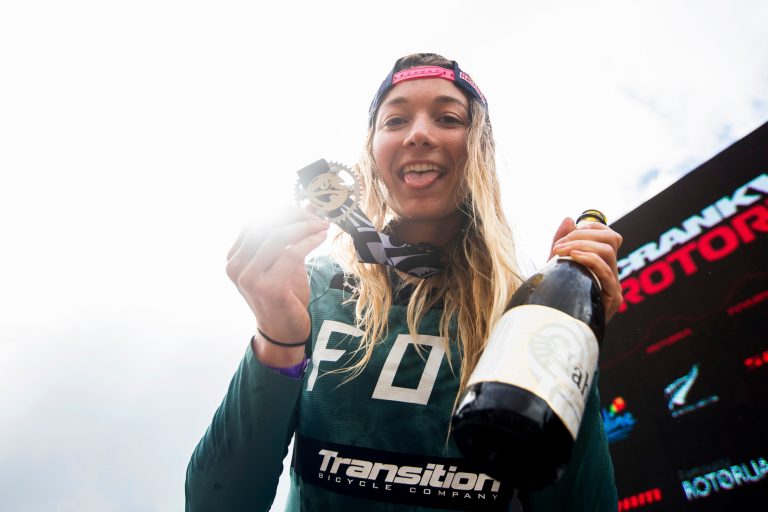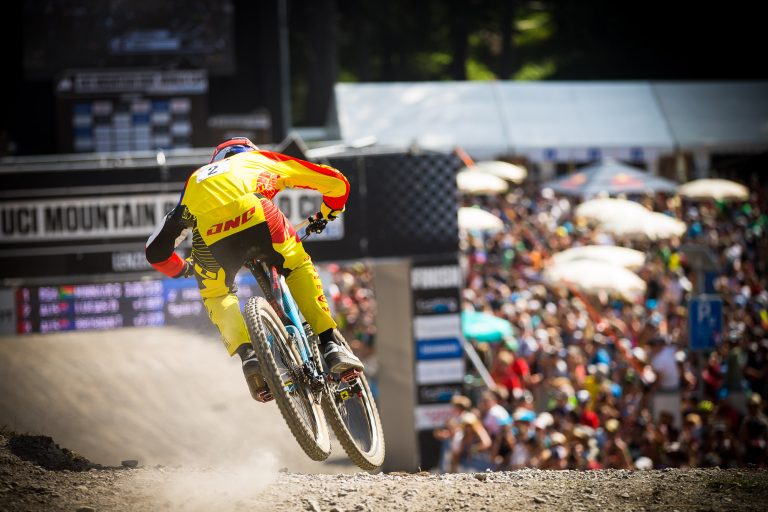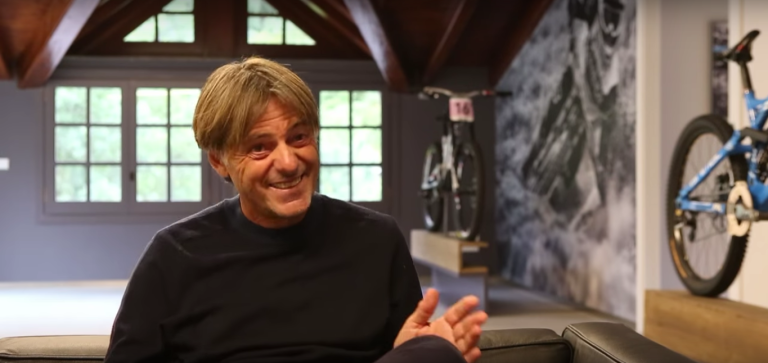
In the world of cycling the UCI World Championships enjoys an almost mythical status. For our chosen discipline of downhill we have no Olympics, no X–Games, and thus the World Championships is our biggest one–day, one–off, yearly race…
Taken From Dirt issue 140, October 2013
Winning the World Cup overall might gain you more respect from your peers, but there is something altogether more special about the title ‘World Champion’. It does not reward those who are consistent all season, rather the one rider who is able to deal with the pressure and puts together that perfect race run, irrespective of weather conditions, style of track, time of day or phase of the moon.
To be World Champion is to be part of an exclusive group and there are not many who have achieved the heady heights of its glory. Sam Hill, Gee Atherton, Steve Peat and Greg Minnaar in recent years, there are many world class downhill racers who have enjoyed long and successful careers while never gaining entry to the rainbow stripes club.
The location of three World Cups in recent years, Pietermaritzburg has become a regular stop for the circuit. Always provoking at least a little bit of controversy, there is no mountain or chairlift in Kwazulu Natal, the Zulu kingdom having to make do with a hill and minibusses instead. The early attempts at organising a World Cup in PMB were marred by uplift issues but by 2013 these had been completely resolved and the drive up the N3 in the back of a minibus is now a familiar one for the riders.
At 3.14 km long, with only a scant vertical drop, the course builder Nigel Hicks has done an extremely impressive job of working with what he has, and the track that greeted the riders on coursewalk day was hugely improved over the first PMB course from 2009. While still the flattest and most pedally course on the circuit by some margin, the track also holds the title of highest average speed, with flow and maintenance of velocity being the name of the game.
To tuck or to pedal, to sit down or to stand up – these are not questions normally asked at a mountain bike World Cup, but PMB is all about these marginal gains. Vent holes cut in peaks, size medium jerseys for those who usually wear large, gaffer tape over laces and curvaceous number board mounts – everyone tries at least something to cheat the wind. All well and truly within the rules, of course.
While many racers experience a hometown race of sorts (Steve Peat in Fort William, Mick Hannah in Canberra, Fabien Barel in Les Gets) these are all relatively tenuous links compared to Greg Minnaar’s connection to PMB. Born, raised and still living there now, ‘maritzburg is very much Greg’s home. The track mere minutes from his house, Greg enjoys the luxury of sleeping in his own bed the night before the UCI World Downhill Championships. The legion of fans known as the ‘One Life’ crew may occasionally follow Greg around the world but the numbers present in South Africa are quite a sight to behold. With this hometown advantage of sorts comes also what must be a truly immense amount of pressure for Mr Minn.
Having won here twice in the past, this army of fans expect nothing less than a repeat performance, and as Greg himself will tell you, winning a downhill race against this level of competition is no mean feat. An off–season of specific training, added to a base fitness achieved over a lifetime, plus meticulous preparation of equipment and incredible mental strength, are something that Greg shares with all his main competitors. It is what you do on top of these things that separates the riders come race day.
Click through to view Part one of the UCI World Downhill Championships: Pietermartitzburg 2013 gallery befoe reading on…
An unavoidable topic of conversation this year is the (seemingly) perennial question: Does size really matter? 26”, 27.5” ish or 29”? Who would have thought a couple of years ago that all three wheel sizes would be raced in a UCI Downhill World Championships? The internet may have been a–buzz with arguments, rants and even the occasional discussion, but still nobody really knew who was taking what to World Champs.
Of the main contenders, Stevie Smith and Nick Beer aboard their Devincis had made the most effort. Completely custom, one–off, World’s specific bikes, their 650B 165mm travel machines were the culmination of a year–long project to fabricate the perfect vehicle for the PMB track. The size of the grins on both Stevie and Nick’s faces after the first day of practice showed how successful the project had been. Confidence was high in the Devinici camp, and the Dave Weagle designed bikes were considered a complete success.
Few of the other top teams had made such a concerted effort with their World Champ’s bikes. Lighter weight build kits, semi–slick tyres and air shocks were the extent of the modifications most had on display. Among the wild cards for the race things got a bit more interesting. Jared Graves and Mitch Ropelato had both opted to try something a little different. Jared with his carbon Yeti SB66c bike and Mitch with his Specialized Enduro 29er.
Having raced this bike all season at the newly formed Enduro World Series, Graves professed to feeling much more comfortable on the little bike than his standard DH sled. Openly admitting that it was a compromise, Jared was willing to concede time on the more technical top section in return for what he felt was a massive advantage on the pedal section towards the bottom end of the track. Much more of an unknown entity, ‘Rope–a–dope’ enjoys riding his wagon wheeler and figured he might as well try something at World Champs. Having raced the bike at numerous occasions throughout this season, if there were any able to take advantage of the largest wheel size on offer, Mitch could well be that person. And while the internet practically went into meltdown when Mitch’s bike choice was revealed, Specialized team mechanic Jacy had a rather more level headed approach, “The most important thing is racing what you are comfortable on, pretty much any bike can be fast as long as the rider is happy”.
Rachel Atherton talked after the race about one of the biggest obstacles for a rider at World Champs, especially one in the southern hemisphere, is a lack of the ordinary routine. Strange practice time scheduling, scorching hot winter days that confusingly got dark at 4:30pm and the absence of the infrastructure that all of the big teams have present at all European and North American races, it was the rider most able to deal with these changes that would triumph come Sunday afternoon.
Click through to view the full gallery
Official course walk on Wednesday was far from the first time most people had seen the track, with many people arriving as early as the previous week to acclimatise to the African weather. What greeted the riders can only be described as a dust bowl. A PMB winter is somewhat different to a rainy European one and the complete and utter lack of any moisture whatsoever had left the track extremely dry. What had once been relatively simple turns were now made exponentially more difficult with the fine dust covering practically the length of the track from top to bottom.
The hard baked surface was deteriorating rapidly with chunks the size of tennis balls becoming dislodged by the foot traffic. As practice commenced, this deterioration accelerated with holes the size of 26” wheels growing almost as fast as the trees on the pedally section. Quite how it is possible for trees to grow 25 feet in the space of 12 months is beyond me, but hey, TIA. This infamous flat drag of previous years, once a barren landscape, was now densely forested. Where 2012 had faced the riders with a seemingly never–ending and somewhat brutal pedalling section, the increased tree cover at least gave the impression of a reduction in length.
Another of the changes from the norm of the World Cup schedule was the removal of qualifying and it being replaced by ‘Mandatory Timed Training’. Having been in place for several years at the UCI World Downhill Championships, with riders seeded before the event based on their UCI standings, the timed training session is still somehow a topic of slight confusion. Riders have to start the run in order to be able to complete on Sunday, but apart from that fact it is merely an approximate gauge of speed. Head games and sneaky tricks abound in the timed run, with certain people going all out in one section of the track and coasting another and some adding in an intentional brake check to mask their true speed. While it may be a good indication of who is on form and on pace, it is merely that, an indication.
While the weather had been consistent up until that point, the heavens opened on Thursday night, but not with a torrential rainstorm as predicted, rather as if the rain gods had thought the track could merely do with an even sprinkling overnight to dampen down the dust. Perfect tacky conditions greeted the riders on Friday morning, an abundance of grip plastered huge grins on the faces of much of the field.
Mick Hannah has been focussing on this race for a full two years now, knowing the high speed nature of Pietermaritzburg suits his strengths as well as any track is ever likely to. Talking to Mick during this season has revealed a quiet confidence regarding this race and setting the fastest first sector time in timed training showed that ‘Sick Mick’ was on pace. The surprise result was the young man in second place, on what some people might consider to be practically a cross country bike.
Mitch Ropelato had piloted his 29” wheeled bicycle faster than anyone had predicted. While Mitch may have been openly confident, such a spectacular result surprised even him. And in first? Moustachioed Canadian hipster, Stevie Smith. With only two 26” wheeled bikes in the top six, there was serious concern that the entire internet might well implode. The wheel size debate had seemingly been put to bed, those on 26” bikes were clearly off the pace.
Rumours were flying in the pits, with nobody quite sure who had done what and where in their timed runs. Hannah had put in the fastest top sector and then coasted the rest, not wanting to take anything out of his legs before Sunday’s impending effort. Aaron Gwin punctured and thus did not post a time. Sam Hill crashed and coasted down. And had Greg Minnaar really executed a three second brake check somewhere in the woods? One thing was clear, nobody had put all of their cards on the table.
The Junior guys have enjoyed a separate race all season at the World Cups and World Champs was no different. On a completely different schedule all week, they walked the course a day early, practiced on their own and raced on Friday morning. With a disappointing field of only five girls, the Junior women’s category was completely dominated by Tahnee Seagrave. Tahnee has been putting in solid results racing with the elite women all season, and a seven second advantage stamped her authority on the event.

